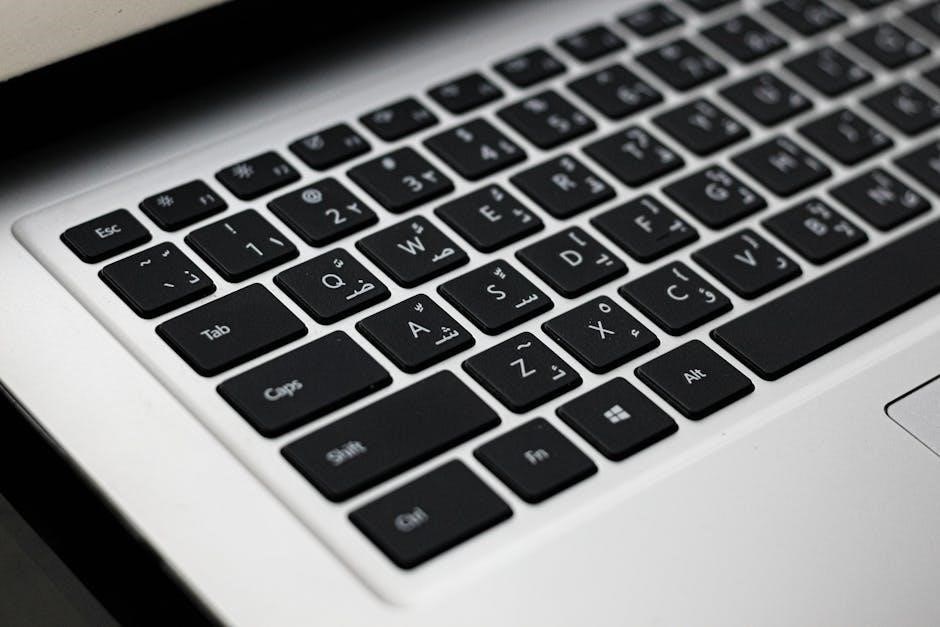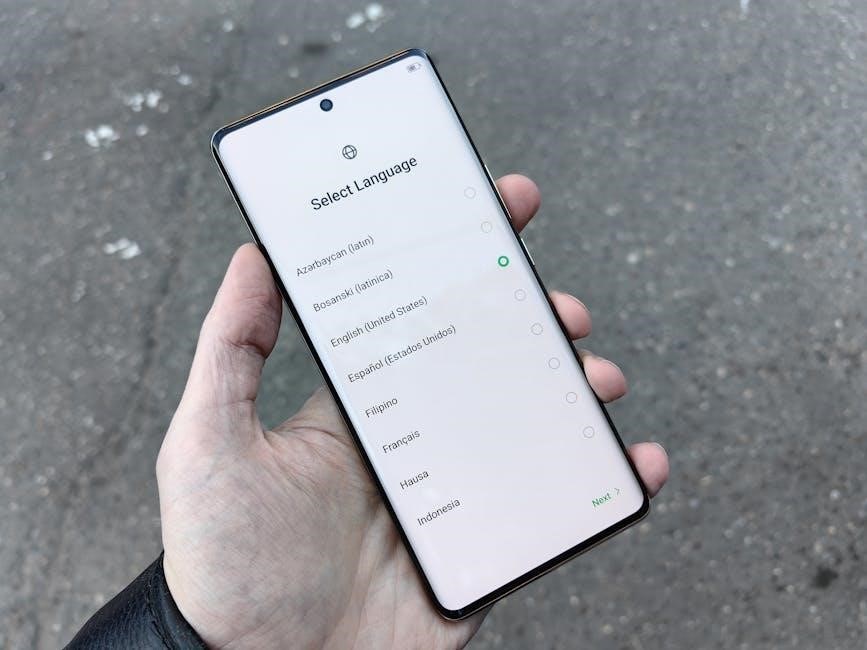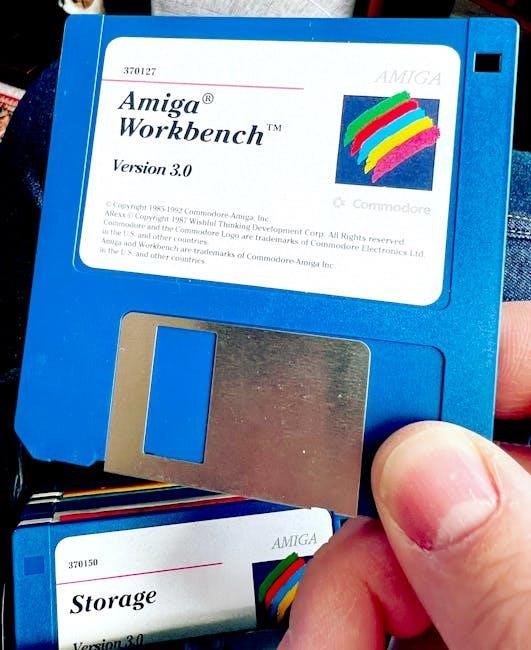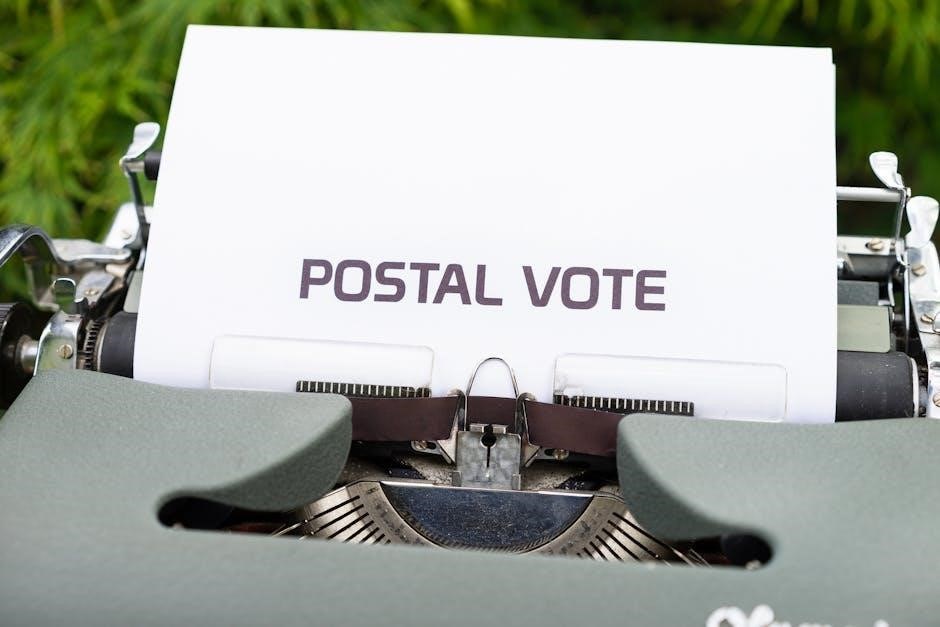JBL Charge 3 Manual: Comprehensive Guide
The JBL Charge 3 is a powerful portable Bluetooth speaker․ It delivers high-quality stereo sound․ It also functions as a power bank․ Its design incorporates waterproof features, durable fabric, and rugged housing, making it suitable for various environments․
Welcome to the comprehensive guide for the JBL Charge 3, the ultimate portable Bluetooth speaker․ This guide is designed to provide you with everything you need to know about your JBL Charge 3, from initial setup to advanced features․ This speaker is known for its powerful stereo sound and ability to function as a power bank, ensuring your devices stay charged on the go․
The JBL Charge 3 is built to withstand the elements, boasting a waterproof design, durable fabric, and rugged housing․ Whether you’re poolside or caught in the rain, your speaker is protected․ This manual will walk you through its features, pairing process, troubleshooting tips, and safety precautions, ensuring optimal usage and longevity of your device․ Get ready to unlock the full potential of your JBL Charge 3!

Overview of Features
The JBL Charge 3 boasts several key features․ These include wireless Bluetooth streaming for music․ It also has a power bank functionality․ It offers a waterproof design and durable construction for longevity․
Wireless Bluetooth Streaming
The JBL Charge 3 offers seamless wireless Bluetooth streaming; This allows users to connect their smartphones, tablets, or other Bluetooth-enabled devices effortlessly․ With Bluetooth version 4․1, the speaker provides a stable and reliable connection for uninterrupted audio playback․ Users can enjoy their favorite music, podcasts, and audiobooks without the hassle of tangled wires or complicated setups․
The wireless connectivity ensures a convenient and user-friendly experience․ The JBL Charge 3 lets you stream audio from a distance․ This makes it ideal for parties, outdoor gatherings, or simply relaxing at home; The Bluetooth functionality enhances the speaker’s versatility․ This allows it to be easily integrated into various listening environments․
Compatible with A2DP, AVRCP, HFP, and HSP profiles, the JBL Charge 3 supports a wide range of Bluetooth devices and applications․
Power Bank Functionality
The JBL Charge 3 doubles as a power bank․ This allows users to charge their smartphones and tablets․ This is useful when you are on the go․ Equipped with a 6000mAh battery, it provides ample power․ It ensures that your devices stay charged․
The power bank feature makes the JBL Charge 3 an ideal companion for travel, outdoor activities, and emergencies․ You can charge your devices by connecting them to the speaker’s USB port․ This eliminates the need for carrying extra power banks or searching for outlets․
The power bank function enhances the speaker’s value․ This provides a practical solution for maintaining your devices․ The high-capacity battery ensures that you can listen to music and charge your devices simultaneously; This makes the JBL Charge 3 a versatile and reliable device․
Waterproof Design (IPX7)
The JBL Charge 3 boasts an IPX7 waterproof rating․ This means it can withstand immersion in water up to 1 meter deep for 30 minutes․ This feature makes it perfect for poolside use․ It is also suitable for beach trips, and even rainy days․
The waterproof design allows you to enjoy your music without worrying about splashes or accidental submersion․ However, it is crucial to ensure that all cable connections are tightly closed․ This ensures the speaker’s waterproof integrity․ Failing to do so may result in damage to the device․
The IPX7 rating provides peace of mind․ You can confidently use the speaker in various wet environments․ This ruggedness enhances the overall durability and versatility of the JBL Charge 3․ It is suitable for both indoor and outdoor use․ Enjoy your music without limitations․
Durable Fabric and Rugged Housing
The JBL Charge 3 is built to withstand the rigors of daily use․ It features a durable fabric material․ This material protects the speaker from wear and tear․ It also provides a comfortable grip․ The rugged housing adds an extra layer of protection against bumps and drops․
This combination of durable fabric and rugged housing ensures that the JBL Charge 3 can handle various environments․ Whether you are taking it on outdoor adventures or using it at home, the speaker is designed to last․ The materials are carefully selected to provide both protection and a premium feel․
The robust construction of the JBL Charge 3 makes it a reliable companion․ You can enjoy your music without worrying about damaging the speaker․ Its durable design enhances its overall value․ It makes it a worthwhile investment for those seeking a long-lasting portable speaker․

Getting Started
Setting up your JBL Charge 3 is straightforward․ This section will guide you through charging the speaker, powering it on and off, and pairing it with your Bluetooth devices for seamless music playback․
Charging the Speaker
To ensure your JBL Charge 3 is ready for use, proper charging is essential․ Locate the charging port on the speaker, usually covered by a protective cap to maintain its waterproof integrity․ Open this cap carefully․ Connect the provided USB cable to the charging port on the JBL Charge 3 and the other end to a USB power source; This could be a wall adapter, a computer USB port, or a portable power bank․
When connected, the LED indicator will illuminate, showing the charging status․ A blinking light typically indicates that the speaker is actively charging․ Once fully charged, the LED indicator will usually display a solid light or turn off, depending on the specific model․ A full charge typically takes several hours, so it’s best to allow ample time for this process․ A fully charged JBL Charge 3 provides hours of playtime․ Remember to securely close the protective cap over the charging port after disconnecting the cable to maintain its waterproof capabilities․

Powering On/Off
Operating your JBL Charge 3 is simple and intuitive․ To power on the speaker, locate the power button, usually indicated by a universal power symbol․ Press and hold this button for a short duration, typically a few seconds․ You should hear an audible chime or see an LED indicator illuminate, signifying that the speaker is powering on․
To power off the JBL Charge 3, repeat the same process․ Locate the power button and press and hold it for a similar duration․ Again, you will likely hear an audible chime or see the LED indicator turn off, confirming that the speaker is powering down․ Ensure the speaker is completely off before storing it or disconnecting from power to conserve battery life․ Consistent and proper powering on and off will help maintain the longevity of your JBL Charge 3․ Familiarizing yourself with this process ensures seamless usability․
Bluetooth Pairing
To connect your JBL Charge 3 via Bluetooth, first ensure the speaker is powered on․ Then, activate Bluetooth on your smartphone, tablet, or other Bluetooth-enabled device․ The JBL Charge 3 will automatically enter pairing mode upon its first power-up․ If not, press the Bluetooth button on the speaker to initiate pairing․
On your device, search for available Bluetooth devices․ You should see “JBL Charge 3” appear in the list․ Select it to begin the pairing process․ You might be prompted to enter a pairing code; if so, use “0000․” Once paired, you’ll hear a confirmation sound from the speaker․
If pairing fails, ensure no other devices are connected․ Repeat the process, or try restarting both the speaker and your device․ After successful pairing, your device will automatically connect to the JBL Charge 3 when both are powered on and within range․

JBL Connect Feature
The JBL Connect feature allows you to wirelessly connect multiple JBL speakers․ Enhance your audio experience by pairing speakers together․ Enjoy synchronized playback for a more immersive sound․
Pairing Multiple Speakers
To pair multiple JBL speakers using JBL Connect, begin by ensuring all desired speakers are powered on․ Locate the JBL Connect button on each speaker; it’s usually indicated by a chain-like symbol․ Press the JBL Connect button on the first speaker you want to use as the primary device․ Then, press the JBL Connect button on all other speakers you wish to include in the pairing․
The speakers will automatically search for and connect to each other․ A successful connection is usually indicated by an audible tone or a solid light on each speaker․ Once connected, all speakers will play the same audio from the connected Bluetooth device simultaneously․ This feature is ideal for creating a wider soundstage or filling larger spaces with music․ Remember that the number of speakers that can be connected may be limited, so consult the JBL Connect app for specific device limitations․
Stereo Setup via JBL Connect App
The JBL Connect app enhances the multi-speaker experience by enabling a stereo setup․ After pairing multiple JBL speakers using the JBL Connect feature, open the JBL Connect app on your smartphone or tablet․ The app will automatically detect the connected speakers․ Within the app, you’ll find the option to configure a stereo setup․
Select the stereo mode, and the app will prompt you to designate one speaker as the left channel and the other as the right channel․ This creates a true stereo soundstage, with distinct audio separation for an immersive listening experience․ The app interface is intuitive, making the setup process straightforward․
Ensure that both speakers are positioned appropriately to maximize the stereo effect․ Experiment with speaker placement to find the optimal soundstage in your listening environment․
Firmware Updates through the App
The JBL Connect app facilitates firmware updates for your JBL Charge 3, ensuring optimal performance and access to the latest features․ To check for updates, connect your JBL Charge 3 to your mobile device via Bluetooth and open the JBL Connect app․ The app will automatically search for available firmware updates․
If an update is available, the app will prompt you to begin the update process․ Ensure your speaker has sufficient battery life and maintain a stable Bluetooth connection throughout the update․ The app will guide you through each step, displaying a progress bar to indicate the update’s status․
Avoid interrupting the update process, as this could potentially cause issues with the speaker’s functionality․ Once the update is complete, the app will notify you․
Device Renaming in the App
The JBL Connect app provides a convenient feature to rename your JBL Charge 3, especially useful if you have multiple JBL speakers․ This customization helps you easily identify and manage your devices within the app․
To rename your speaker, first connect it to your mobile device via Bluetooth and open the JBL Connect app․ Navigate to the settings or device information section within the app․ You should find an option to rename your JBL Charge 3․
Tap on the rename option and enter your desired name for the speaker․ Choose a name that is easily recognizable to you․ Save the new name within the app․ The new name will now be displayed in the app whenever your speaker is connected․

Troubleshooting

Encountering issues with your JBL Charge 3? Here are some common troubleshooting steps․ If your speaker won’t power on, ensure it is fully charged․ Connect it to a power source using the provided USB cable and allow it to charge for several hours․
If Bluetooth pairing fails, verify that Bluetooth is enabled on your device․ Restart both your device and the speaker․ Ensure the speaker is within range․ Clear the pairing history on both devices and try pairing again․
For sound issues, check the volume levels on both the speaker and your connected device․ Ensure no obstructions are blocking the speaker grilles․ If the sound is distorted, try a different audio source․

Specifications
The JBL Charge 3 features Bluetooth 4․1․ It supports A2DP, AVRCP, HFP, and HSP profiles․ Its transducer size is 2 x 50mm, with a rated power of 2 x 10W․ The frequency response is 65Hz-20kHz․
Bluetooth Version
The JBL Charge 3 incorporates Bluetooth version 4․1, a wireless connectivity technology that enables seamless wireless streaming from various Bluetooth-enabled devices․ This version ensures a stable and efficient connection, allowing users to effortlessly pair their smartphones, tablets, and other compatible devices with the speaker․ Bluetooth 4․1 offers improved data transfer rates and reduced power consumption compared to earlier versions, contributing to extended battery life during wireless playback․
Furthermore, Bluetooth 4․1 enhances the overall user experience by providing a more reliable and robust connection, minimizing dropouts and interruptions in audio streaming․ This advanced Bluetooth technology allows for a greater range of movement without sacrificing audio quality, ensuring uninterrupted enjoyment of music and other audio content․ The integration of Bluetooth 4․1 in the JBL Charge 3 underscores its commitment to delivering a seamless and high-quality wireless audio experience․
Supported Profiles (A2DP, AVRCP, HFP, HSP)
The JBL Charge 3 supports a comprehensive suite of Bluetooth profiles, including A2DP V1․3, AVRCP V1․5, HFP V1․6, and HSP V1․2, ensuring compatibility with a wide range of devices and functionalities․ A2DP (Advanced Audio Distribution Profile) enables high-quality audio streaming from source devices to the speaker, delivering rich and immersive sound; AVRCP (Audio/Video Remote Control Profile) allows users to remotely control playback functions, such as play, pause, skip tracks, and adjust volume, directly from the speaker or connected device․
HFP (Hands-Free Profile) facilitates hands-free calling, enabling users to answer and make calls through the speaker with built-in microphone support․ HSP (Headset Profile) provides basic headset functionality, allowing the speaker to be used as a wireless headset for audio communication; The inclusion of these profiles enhances the versatility and user-friendliness of the JBL Charge 3, catering to diverse audio and communication needs․

Transducer Size and Power
The JBL Charge 3 boasts a robust audio performance, characterized by its use of dual 50mm transducers․ These transducers are the core components responsible for converting electrical signals into audible sound waves, effectively producing the speaker’s output․ The size of these transducers, at 50mm each, contributes to the speaker’s ability to deliver a full and balanced sound spectrum․
Complementing the transducer size is the speaker’s rated power output, specified at 2 x 10W․ This indicates that each transducer is capable of delivering 10 watts of power, resulting in a combined total of 20W for the entire system․ This power rating is a key factor in determining the speaker’s loudness and its ability to fill a room with sound․ The combination of transducer size and power output ensures a high-quality audio experience, suitable for various listening environments․
Frequency Response
The JBL Charge 3’s frequency response is a crucial specification that defines the range of audio frequencies the speaker can reproduce․ The Charge 3 has a specified frequency response ranging from 65Hz to 20kHz․ This range indicates the speaker’s ability to reproduce sounds from the lower end of the spectrum (65Hz), representing bass frequencies, to the higher end (20kHz), representing treble frequencies․
A wider frequency response generally signifies a more comprehensive and balanced audio reproduction․ With its 65Hz lower limit, the Charge 3 is capable of delivering noticeable bass, enhancing the depth and richness of music․ The 20kHz upper limit ensures clear and crisp reproduction of high-frequency sounds, contributing to overall audio clarity․ This frequency response makes the JBL Charge 3 suitable for various music genres and listening preferences․

Safety Information
To ensure safe use of the JBL Charge 3, users should remove all cable connections and tightly close the cap before exposing it to liquids․ Failure to do so may result in permanent damage․
Waterproof Precautions
The JBL Charge 3 boasts an IPX7 waterproof rating, offering protection against water immersion․ However, it is crucial to take necessary precautions to maintain its waterproof integrity․ Before exposing the speaker to water, ensure that all cable connections are disconnected․ This includes the charging cable and any auxiliary cables that may be connected․
After disconnecting the cables, tightly close the cap that covers the charging port and other inputs․ This cap is designed to create a watertight seal, preventing water from entering the speaker’s internal components․ Failure to properly close the cap may compromise the waterproof seal and result in water damage․
It is important to note that the IPX7 rating only applies when the cap is securely closed․ Exposing the JBL Charge 3 to liquids without properly sealing the cap may lead to permanent damage to the speaker, voiding the warranty․ Always double-check the cap before using the speaker near water sources;